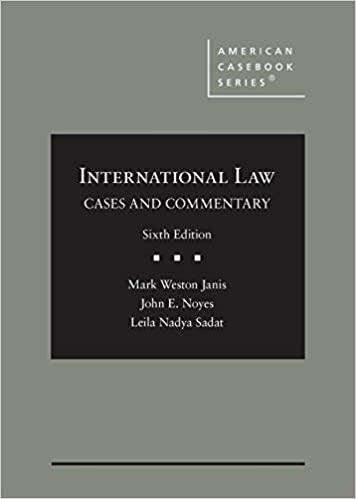Question
Case: A head office for a fuel transportation company in the Quebec City region employs 50 drivers who are all grouped together in an accreditation
Case:
A head office for a fuel transportation company in the Quebec City region employs 50 drivers who are all grouped together in an accreditation unit, and it is a member of the National Trade Union Confederation. In June, the five-year collective bargaining agreement that they currently have will come to an end.
The upcoming collective agreement will be negotiated by Steeve, the director of labour relations. Steeve has authority and is familiar with the collective bargaining agreement and labour legislation. Denis, the union's president, is working hard to rally the members behind him in support of the union's demands, the bargaining mandate, and the union's approach. Denis and Steeve had previously had disagreements about the interpretation of the Collective Agreement when the negotiations began. Union demands are not accepted even after ten months of negotiations, some of which have a significant impact on the corporation due to the large number of truck drivers and their flexibility. Denis escalates the confrontation by ordering union members to slow down their routes, which he expects will result in disgruntled clients. Steeve then arranged a meeting with several unionized workers, who told him that they would rather have a signed, less favourable agreement than lose their employment. After going against each other through union workers, Denis informs Steeve that he and his negotiating committee will not attend the next round of negotiations since the management party refuses to discuss.
In the study of labour relations, union-management relationships can be divided into the following five categories; conflict, containment-aggression, accommodation, cooperation, and collusion. Factors affecting union-management relationships include personalities of the leaders, the values and beliefs of leaders, and their experience with collective bargaining(Suffield & Gannon, 2020, page 174). In this case, the primary problem is clear thatthere is an extreme conflict between management and the union, as they cannot agree on how to interpret their collective agreement.The solution chosen is Mediation-Arbitration to rsolve the dispute
Question:
1) What is the Plan for implementation (short, medium and long term) of the mediation-arbitration ?
PS: A mediation-arbitration is a two-step process that involves using a third party to help both parties reach agreement (Suffield & Gannon, 2020, Page 210). During the first stage, the individual assisting both parties will act as a mediator and try to help the parties reach an agreement. If that fails, the same person then will act as an arbitrator and will use the information available to them to set the terms of the collective agreement. This process gives the opportunity to get more quickly to the arbitration process if the mediation fails. This will be beneficial for both parties sas the negotiations between both parties have been going for a long time with no hope of resolutions. It could also encourage both parties to be willing to operate in good faith as the presence of a third party may facilitate the communication between them. As well as it is a cost saving option since and time saving option as both parties will not have to spend as much as the cost will be shared between both parties and their issues might be solved promptly. Also, the individual acting as an arbitrator in the eventuality that they are not able to reach an agreement on their own, will be more familiar with the case since they would have acted as a mediator during the mediation stage. Thus, their decision will most likely accurately meet both parties' needs based on the evidence presented by either side.
Thus, mediation-arbitration is the best solution as it guarantees that both parties have two different options to solve their issues while being cost and time efficient.
Step by Step Solution
There are 3 Steps involved in it
Step: 1

Get Instant Access to Expert-Tailored Solutions
See step-by-step solutions with expert insights and AI powered tools for academic success
Step: 2

Step: 3

Ace Your Homework with AI
Get the answers you need in no time with our AI-driven, step-by-step assistance
Get Started


